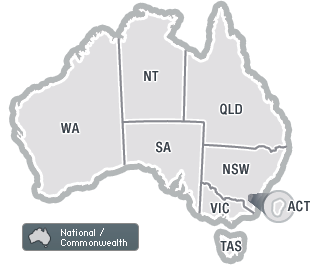"Inverting the logic" helped the captain of the 2010 Qantas flight that suffered a catastrophic engine explosion above Indonesia overcome the crisis and land safely with all passengers unharmed.
The concept, used by NASA flight director Gene Kranz during the Apollo 13 spaceflight crisis in 1970, tells us to "stop wondering about what has failed and focus on what's working", Captain Richard de Crespigny said.
De Crespigny was the keynote speaker at the Australian Institute of Health and Safety's 2024 National Health and Safety Conference, being held in Melbourne this week.
In his presentation yesterday, he told delegates how he as pilot-in-command and his co-pilots safely landed Qantas Flight 32 after an engine failed soon after taking off from Singapore en route to Sydney on 4 November 2010.
It was a "black swan" event, he said – an incident that has an extremely low probability of occurring, is unpredictable and can have severe consequences. Others, he said, included the September 11 terrorist attacks in the US in 2001, and the global financial crisis in 2008.
A turbine disc in one of the Qantas plane's engines had wrenched free and disintegrated, causing shrapnel to puncture through the wing, tail and fuselage, and damage the fuel systems and flight controls.
De Crespigny said that as he was hit by consecutive system failure warnings and lost his situational awareness, he initially "just sat there thinking I don't know what to do".
But after prioritising jettisoning all unnecessary plane parts and climbing to a safe altitude, he "inverted the logic" to focus on what was working.
"Here's a fuel system where we have eight out of 11 fuel tanks that are totally inoperative," de Crespigny said.
"But when you invert the logic, we have three fuel tanks sitting over three engines that could drip fuel into the engines and they've got two-and-a-half hours of fuel left to run on engine one, and three-and-a-half hours on engines three and four," he said.
"So as soon as we inverted the logic and knew we had two-and-a-half hours before the next engine would go quiet, the whole mood in the cockpit changed."
De Crespigny said a key rule for a crisis is to "make time".
"There's always more time in a crisis than you would think. If you're on a boat and have a crisis, chuck the anchor out; you're in a car in a crisis, stop," he said.
The Qantas Flight 32 crew was eventually able to land the plane safely at Singapore's Changi Airport, with no injuries reported among the 469 passengers and crew onboard.
De Crespigny said no one is "off the hook" from dealing with crises, which have been felt personally, corporately and nationally in recent decades.
"You have the knowledge, training, experience and standard operating procedures to handle the remote events," he told the safety professionals in the audience.
"And you have the leadership decision-making, crisis management and risk skills to create novel solutions for the unknown unknowns," he said.
"When you get the ability to know that you can recover from any situation given time, then you get this feeling of being bulletproof and not gun shy. It's the feeling that you can surf the edge of chaos, facing disruptions, being comfortable, being uncomfortable, and expecting the unexpected.
"And that's the feeling the pilots have when they move the thrust levers to start every take off on an unknown flight."



